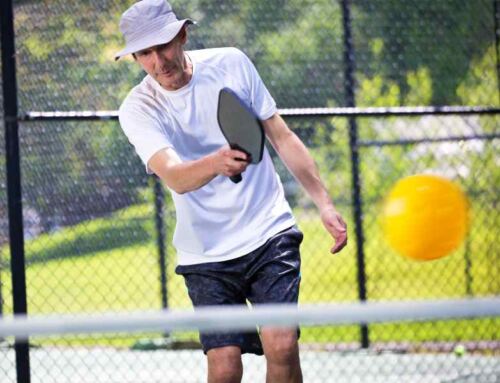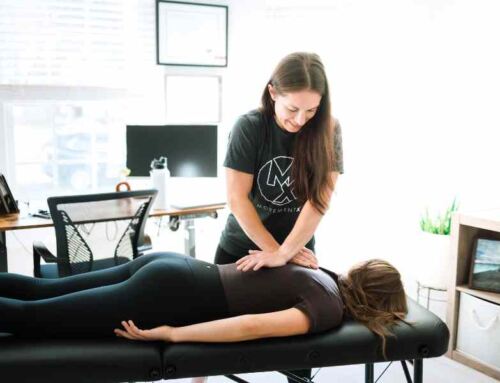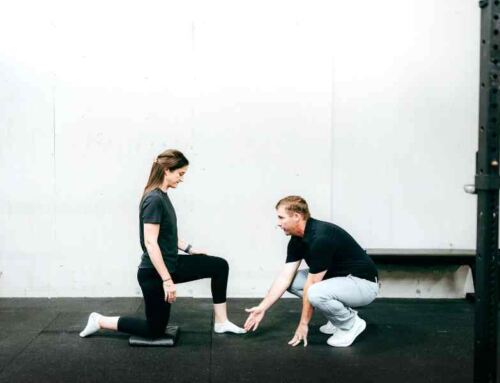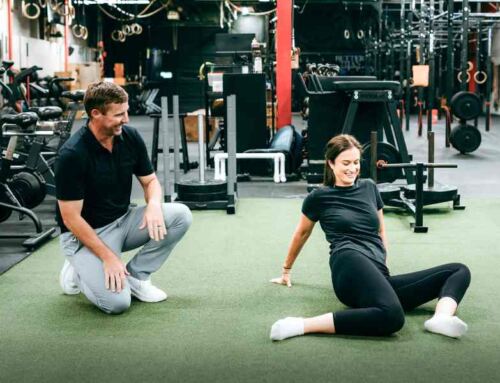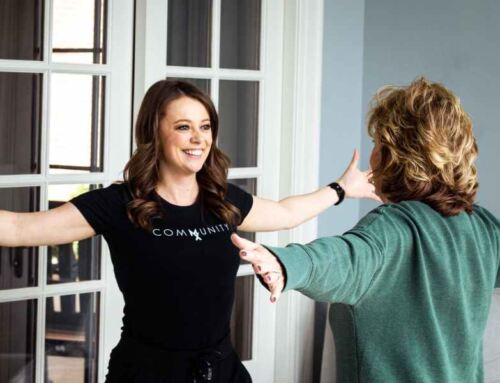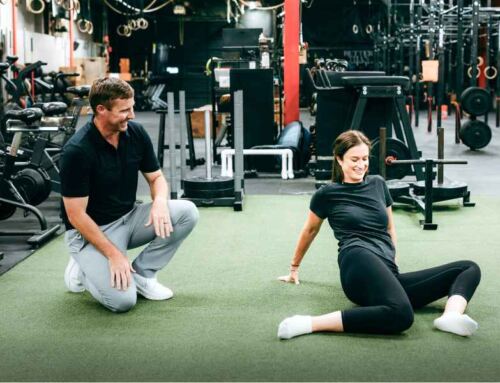A Physical Therapist’s Guide to a Successful CrossFit® Open

What is the Crossfit® Open?
The CrossFit®Open is an annual, 3-week online fitness competition where athletes worldwide have the opportunity to demonstrate the progress they have made throughout their fitness journey in the sport. For some athletes, it’s a time of excitement and anticipation to see where they place on the leaderboard. For many others, the CrossFit®Open is a great way to embrace the spirit of community, push personal boundaries and achieve fitness goals (such as getting their first pull-up or hitting a personal record (PR) on a weightlifting event).
Everyone has a why, and every why is just as important as the next.
Throughout the CrossFit®Open, whether you’re competing to get to the next stage of competition, or you’re determined to achieve a new skill, you are constantly testing yourself and pushing the limit with every workout. Of course there is a big focus on training and movement preparation, but optimizing your recovery and mental readiness between workouts each week is also key to be able to maintain peak performance and minimize risk of injury. In this guide, you will explore a variety of strategies to help you achieve your why and find success during the CrossFit® Open.
Understanding the Demands of the Crossfit® Open
The CrossFit® training methodology is best described as “constantly varied, functional movements, performed at high-intensity.” The CrossFit® Open serves as a competitive platform where athletes are challenged to be ready for anything – a heavy lifting event, a grueling endurance-focused workout, high-skill tests… There are numerous variations and iterations of movements or workouts that can be programmed. However, based on trends of specific movements and workouts from previous years, athletes can gauge what movements will likely show up in the present year’s CrossFit® Open.
Here are all the movements programmed during all previous CrossFit® Open workouts!
By understanding the complexity and variability of the programming, athletes can better prepare mentally, and plan their training and recovery accordingly.
Training Focus Considerations

Train the Standard
CrossFit® movements and workouts have specific standards of performance that athletes must follow in order for their repetitions to count and workout scores to be validated. This ultimately allows for fair play and standardized judging in order to determine athletes that qualify for the next level of competition. However, the standards also help to ensure movement efficiency to reduce risk of injury, as well as provide safety measures with standardized floor plan setups.
Move with Intention
Focus on the anticipated stimulus of each workout, and strategize your performance accordingly. Transitions between sets/reps should be minimal and efficient. Push yourself with movements you consider to be strengths, and focus on technique with more challenging movements.
Pacing Strategies
Pace the workouts based on your strengths and limitations.
- Know the time domain and establish your goal time to finish, or total sets/reps to complete.
- Partition the workout into manageable sets/reps for each movement that can be performed unbroken (prior to needing a rest break).
- Estimate how long each piece should take you to complete, and pace accordingly.
Shorter time domains are typically higher intensity, with faster movement speed and transitions. Longer time domains require grit and consistency throughout a majority of the workout, making sure to preserve some energy for a strong push to the finish.
Injury Prevention & Recovery Strategies

Listen to your Body
Acknowledge those aches and pains! Pain does not always indicate that there is an existing injury or active tissue damage, and may initially act as a warning sign – a request for change. However, pain that consistently presents with a particular movement, and/or begins to affect your workouts and daily activities, may require some extra attention.
Take the time to Rest, Reset, & Replenish
Throughout the CrossFit® Open, it’s important to find a good balance between your training, competition, and recovery each week. Prioritize sleep, nutrition, and rest days. Utilize stress management techniques (ie. meditation or other mindfulness practices) to alleviate mental stress and fatigue. Eat foods that fuel your workouts and make you feel primed and ready to perform at your best throughout training and on competition days.
Physical Recovery Modalities
Incorporating treatment modalities such as mobility techniques, soft tissue work (foam rolling, myofascial release & decompression, percussive massage guns), and dynamic air compression can help to alleviate muscle tension and soreness for accelerated recovery and optimal performance.
Mental Fortitude and Mindset Practices

Remember Your Why
The CrossFit® Open can be just as mentally challenging as it is physically. With each workout comes different movement standards, pacing strategies, frustrations, and challenges. Keep your why at the forefront of your mind and be mindful of what success looks like for you.
Stay Positive and & Open to New Challenges
Be Gritty. Have strong mental fortitude and embrace adversity. Commit to giving your best effort every week and persevere through challenges. Trust your training and preparation, and celebrate all victories. Be proud of what you accomplish and stay determined to strive for more! (Whatever more means for you!)
Community Connection
Be inspired. Embrace the shared passion for health and fitness of the CrossFit® Community.
Inspire others. Help to celebrate other athletes’ successes as they progress through their own unique CrossFit® Open experience.
Check out this blog post on how the CrossFit® ethos fosters a sense of community and camaraderie!
Conclusion
As a physical therapist, the focus when working with athletes is often on movement optimization and physical performance. Although an extensive amount of physical training and preparation helps to define an athlete’s success in the CrossFit® Open, this guide helps to explain that success is much more complex than a leaderboard placing. For some athletes, just getting the opportunity to participate is a success; others are happy to complete the competition without injury; and many are inspired by the sense of community and shared values in health and fitness. No matter your why, consider utilizing the strategies mentioned in order to maximize your success in the CrossFit® Open.
Are you eager to improve your performance? Interested in developing a recovery routine unique to your health & fitness goals? Curious to learn how mindset and physical therapy can help you to achieve all of this and more? Reach out to a MovementX Physical Therapist that will work 1-on-1 with you to develop an individualized plan of care to help you achieve your health & fitness goals!
References
- Bonezzi C, Fornasari D, Cricelli C, Magni A, Ventriglia G. Not All Pain is Created Equal: Basic Definitions and Diagnostic Work-Up. Pain Ther. 2020;9(Suppl 1):1-15. doi:10.1007/s40122-020-00217-w
- Woolf CJ. What is this thing called pain?. J Clin Invest. 2010;120(11):3742-3744. doi:10.1172/JCI45178
About the Author
Dr. Jessica Crowder is a physical therapist based in Orange County, CA. She treats orthopedic conditions, sports injuries, chronic pain, and post-operative care. Jessica Crowder specializes in treating athletes from CrossFit, weightlifting, soccer, running, and all-round fitness enthusiasts. As a former D1 NCAA soccer player and current CrossFit athlete herself, Dr. Jessica Crowder has made a career of embodying optimal functional movement and enabling others to do the same.



